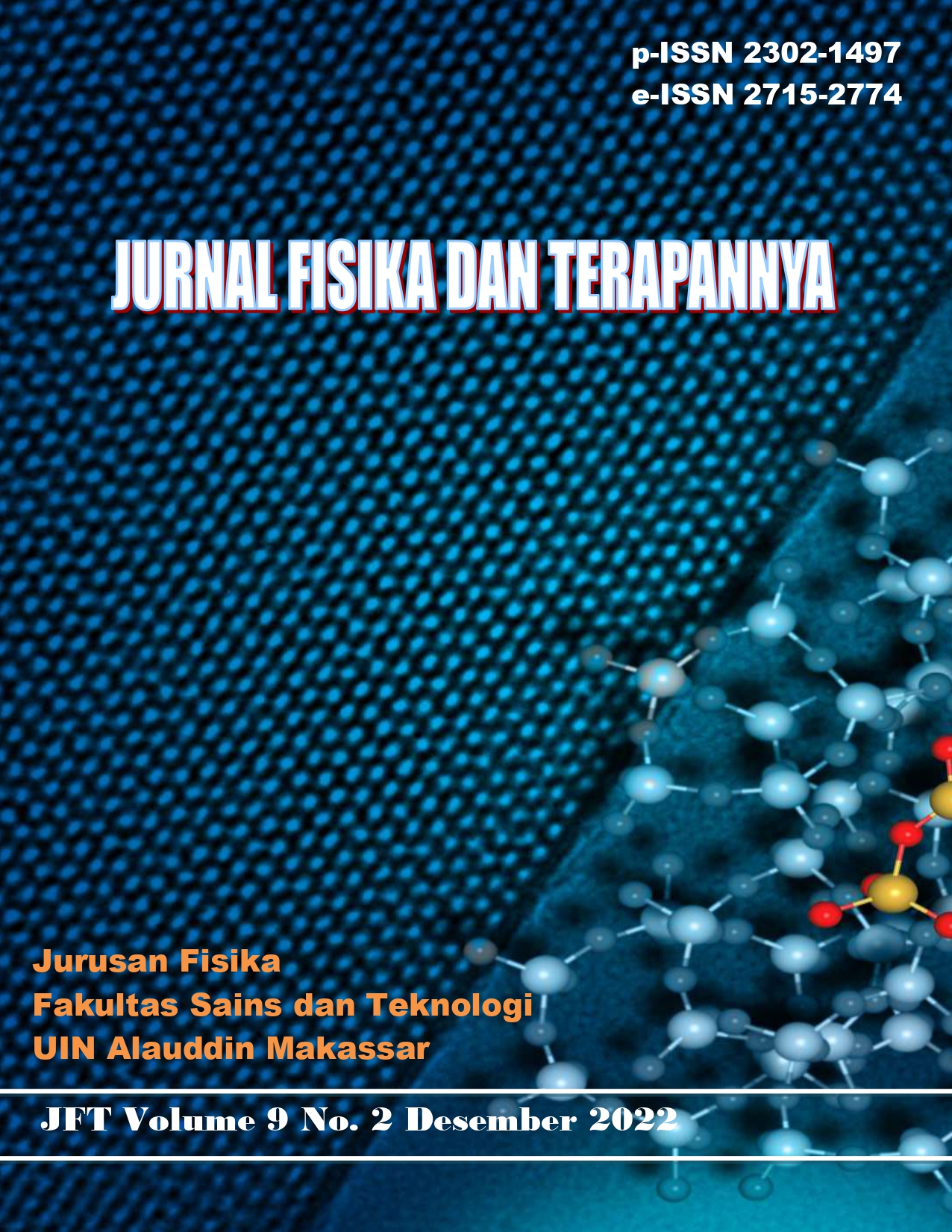Analisis Citra Satelit Himawari 8/9 Terkait Kejadian Hujan Es Di Wilayah Klaten Tanggal 21 Oktober 2021
Abstrak
One of the extreme phenomena that often occurs is hail, hail can occur because when water vapor condenses it turns into ice particles due to the low air temperature factor. Hail includes local rain which covers an area of 5-10 km, and lasts a maximum of 10 minutes. On October 21, 2021, there was hail in Jogonalan Klaten. The incident occurred at around 14.18 WIB. By using Himawari-8 satellite data reference which was analyzed using the SATAID application and UV wind data obtained from the Copernicus web and processed with OpenGrADS software. Then as other supporting data used cloud top temperature data with band 13 himawari 8 which was processed using time series and also air lability data from the web weather.uwyo.edu. From the four data, it will be obtained that the formation of cumulonimbus clouds in the area around Klaten and Jogja as an indication of hail is strengthened by the convergence pattern in the northern region of the island of Java, precisely Central Java which causes a slowdown in the air mass that forms convective clouds which is the cause of hail in Klaten Regency. . This is reinforced by the results of the analysis of the cloud top temperature which reached -18°c.
##plugins.generic.usageStats.downloads##
Referensi
A. Fadholi, “Analisa Kondisi Atmosfer pada Kejadian Cuaca Ekstrem Hujan Es,” 2012.
A. R. Anam dan S. Amri, “Analisis Kejadian Angin Puting Beliung Menggunakan Citra Satelit Himawari-8 (Studi Kasus Kota Bogor, Jawa Barat 21 September 2021),” SLJIL, vol. 6, no. 2, hlm. 1456, Des 2021, doi: 10.36418/syntax-literate.v6i2.5276.
A. Ali dan U. Sa’adah, “Implementasi Metode Deteksi Hujan Es Berbasis Data Radar Cuaca Menggunakan Algoritma Severe Hail Index (SHI),” JFU, vol. 11, no. 3, hlm. 380–386, Jul 2022, doi: 10.25077/jfu.11.3.380-386.2022.
B. P. Dewi dan S. Amri, “Pengaruh Cross-Equatorial Northerly Surge terhadap Kejadian Banjir di Jakarta (Studi Kasus 31 Desember 2019 - 1 Januari 2020),” JIIF, vol. 6, no. 1, hlm. 41–52, Feb 2022, doi: 10.24198/jiif.v6i1.37914.
C.-P. Chang, M.-M. Lu, dan H. Lim, “Monsoon Convection in the Maritime Continent: Interaction of Large-Scale Motion and Complex Terrain,” Meteorological Monographs, vol. 56, hlm. 6.1-6.29, Apr 2016, doi: 10.1175/AMSMONOGRAPHS-D-15-0011.1.
F. Asfahanif dan S. Amri, “Analisis Peristiwa Angin Kencang dengan Citra Satelit Himawari-8 (Studi Kasus: Bangkalan, 17 Oktober 2021),” 2022.
K. A. Browning, “The Structure and Mechanisms of Hailstorms,” dalam Hail: A Review of Hail Science and Hail Suppression, G. B. Foote dan C. A. Knight, Ed. Boston, MA: American Meteorological Society, 1977, hlm. 1–47. doi: 10.1007/978-1-935704-30-0_1.
M. D. Anggoro dan B. Pramujo, “KAJIAN WAKTU HIDUP DAN PERGERAKAN AWAN KONVEKTIF BERBASIS CITRA RADAR DAN MODEL ECMWF,” jmkg, vol. 4, no. 3, hlm. 24–31, Apr 2019, doi: 10.36754/jmkg.v4i3.50.
M. I. Lélé, L. M. Leslie, dan P. J. Lamb, “Analysis of Low-Level Atmospheric Moisture Transport Associated with the West African Monsoon,” Journal of Climate, vol. 28, no. 11, hlm. 4414–4430, Jun 2015, doi: 10.1175/JCLI-D-14-00746.1.
M. Karmini, “HUJAN ES (HAIL) DI JAKARTA, 20 APRIL 2000,” vol. 1, no. 1, 2000.
M.-S. Ahn, D. Kim, Y.-G. Ham, dan S. Park, “Role of Maritime Continent Land Convection on the Mean State and MJO Propagation,” Journal of Climate, vol. 33, no. 5, hlm. 1659–1675, Mar 2020, doi: 10.1175/JCLI-D-19-0342.1.
S. Amri, F. R. Fajary, dan T. W. Hadi, “Analysis of Synoptic Disturbance in Maritim Continent Using Spherical Harmonics Transformation Method,” J.Agromet, vol. 34, no. 2, hlm. 89–99, Sep 2020, doi: 10.29244/j.agromet.34.2.89-99.
S. C. Peatman, J. Schwendike, C. E. Birch, J. H. Marsham, A. J. Matthews, dan G.-Y. Yang, “A local-to-large scale view of Maritime Continent rainfall: control by ENSO, MJO and equatorial waves,” Journal of Climate, hlm. 1–52, Sep 2021, doi: 10.1175/JCLI-D-21-0263.1.
S. Liang, D. Wang, A. D. Ziegler, L. Z. X. Li, dan Z. Zeng, “Madden–Julian Oscillation-induced extreme rainfalls constrained by global warming mitigation,” npj Clim Atmos Sci, vol. 5, no. 1, hlm. 67, Agu 2022, doi: 10.1038/s41612-022-00291-1.
X. Li, Y. Tang, X. Song, dan T. Liu, “Decadal variation of the rainfall predictability over the maritime continent in the wet season,” Journal of Climate, hlm. 1–21, Apr 2022, doi: 10.1175/JCLI-D-21-0862.1.
X. Ni, C. Liu, D. J. Cecil, dan Q. Zhang, “On the Detection of Hail Using Satellite Passive Microwave Radiometers and Precipitation Radar,” Journal of Applied Meteorology and Climatology, vol. 56, no. 10, hlm. 2693–2709, Okt 2017, doi: 10.1175/JAMC-D-17-0065.1.
Z. Li, W. Yu, K. Li, B. Liu, dan G. Wang, “Modulation of interannual variability of tropical cyclone activity over Southeast Indian Ocean by negative IOD phase,” Dynamics of Atmospheres and Oceans, vol. 72, hlm. 62–69, Des 2015, doi: 10.1016/j.dynatmoce.2015.10.006.
##submission.copyrightStatement##
##submission.license.cc.by4.footer##

